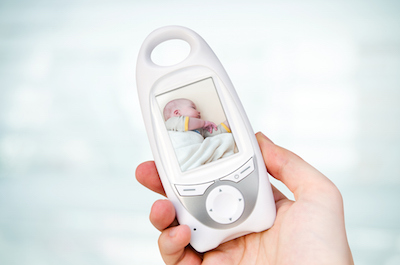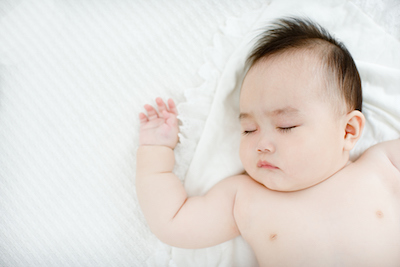Can a smart device save your baby’s life?
If there were a device available for purchase that could protect your infant from sudden, unexplained death and keep your family from the pain and suffering of the loss of a child, would you buy it?
I sure would.
 That’s exactly why thousands of parents are rushing out to buy smartphone-integrated infant physiologic monitors. These are devices that have sensors built into socks, clothing, diaper clips or leg bands to measure an infant’s respiration, movements, pulse rate or blood oxygen levels. These devices transmit data to your smartphone and promise to alert you if there is any physiological change in your baby’s well-being.
That’s exactly why thousands of parents are rushing out to buy smartphone-integrated infant physiologic monitors. These are devices that have sensors built into socks, clothing, diaper clips or leg bands to measure an infant’s respiration, movements, pulse rate or blood oxygen levels. These devices transmit data to your smartphone and promise to alert you if there is any physiological change in your baby’s well-being.
The most popular brand and the one you’re likely most familiar with is the Owlet smart sock, but there are others- Snuza, Monbaby, Baby Vida, and Sproutling, to name a few.
But wait just a minute before you hurry out to your nearest baby store to spend hundreds of dollars on one of these devices. Is it the lifesaving answer to every parent’s prayers? The experts say it isn’t. Despite clever marketing and effective word-of-mouth endorsements from anxious parents everywhere, these devices are not able to guarantee that no harm comes to your baby while he sleeps.
No evidence to support safety, accuracy or effectiveness
Take a look at this recent news headline.
It reads, “Grieving Mom Whose 3-Month-Old Baby Died in His Sleep Shares What Could Have Prevented His Death.” The article describes a mother’s anguish when her 3-month-old died of Sudden Infant Death Syndrome (SIDS) and her belief that if only she had used an Owlet monitor, her son would be alive today.
It’s a pretty compelling argument. It makes me want to go out and buy one right this minute, but I have to stop and ask whether these assertions are true. Would this device have made the difference between this child’s life and death?
To find out let’s look at what pediatricians have to say about these devices. In an article published in The Journal of the American Medical Association, physicians discussed this emerging technology. Here’s what they said:
The authors explain that since these products are made and marketed by private companies, there is no public data available for pediatricians to evaluate whether these devices are accurate, whether they are safe or whether they in fact are able to do what parents are hoping they can.
In fact, the companies strategically avoid making any claims that would give the Food and Drug Administration purview to regulate the products as a medical device. Manufacturers are careful not to tell you that the device can prevent SIDS and save lives (which would put them squarely under the FDA’s authority). They simply say that parents can rest easier at night knowing they don’t have to worry about their baby, but their message is clearly implied and parents buy the device thinking that it will empower them to save their baby from sudden death.
Why should we question it?
Doctors have good reason to be skeptical about these types of devices. Medical apps have an abysmal track record for accuracy and effectiveness. For example, researchers at Johns Hopkins University School of Medicine looked into a widely popular blood pressure app that promised to report a person’s blood pressure and let them know whether they were within the healthy range. It was wrong nearly 80% of the time.
I don’t know about you, but I could probably guess my blood pressure with better accuracy than that.
So how accurate is the Owlet or any of the other devices that promises to save our babies’ lives? Your guess is as good as mine. We have no evidence to validate the claims made by the manufacturers or our fellow parents who recommend them.
Furthermore, medical studies have been conducted in the past that used hospital devices measuring pulse oximetry and other variables to determine whether this kept babies safer after they were sent home from the hospital. They didn’t.
A false sense of security
Beyond the question of whether the use of these devices is helpful, a concern of many pediatricians is that the use of the device may even be harmful.
The American Academy of Pediatrics (AAP) offers guidelines for safe infant sleep that have been proven to prevent infant deaths. Infants who are put to sleep under the following conditions are less likely to suffer SIDS:
-Sleep on a firm, flat surface with no blankets or soft bedding
-Does not co-sleep or share a sleep surface
-Are not overheated
-Are not exposed to smoke, alcohol or illicit drugs
-Are breastfed
-Are immunized
-Use a pacifier during naps and nighttime
 Among these recommendations, pediatricians also caution parents “not to use home cardiorespiratory monitors as a strategy to reduce the risk of SIDS.”
Among these recommendations, pediatricians also caution parents “not to use home cardiorespiratory monitors as a strategy to reduce the risk of SIDS.”
If parents feel they have a safety net with a device that will let them know if a baby’s in trouble, they may be less likely to follow through with the safety interventions that we know saves lives. I’ve heard a few variations of this rationale, and it goes something like this: “Well, I know my baby is really supposed to sleep on his back, but he sleeps SO much better on his tummy. I figured if we have the smart sock to measure his breathing and stuff that it’s okay to let him sleep on his stomach.”
An unproven device cannot take the place of proven interventions that saves lives. It just can’t.
If you have a question about using one of these devices, talk to your pediatrician. Share your concerns and let your doctor help you figure out the next best steps in caring for your child to keep him happy, safe and healthy.







